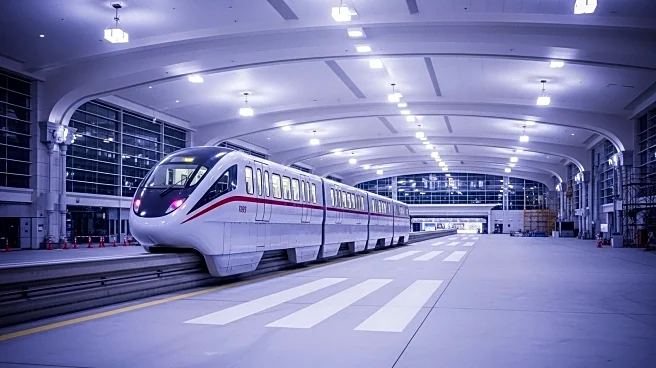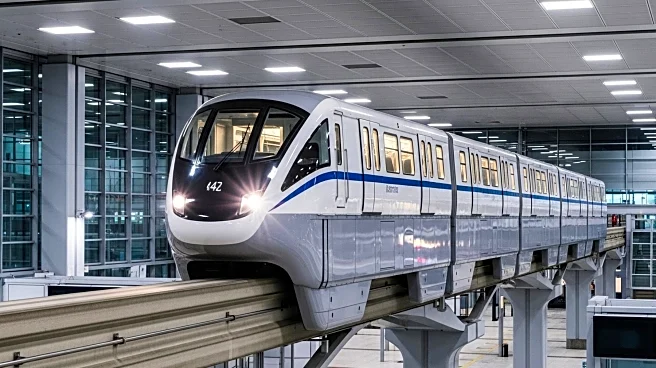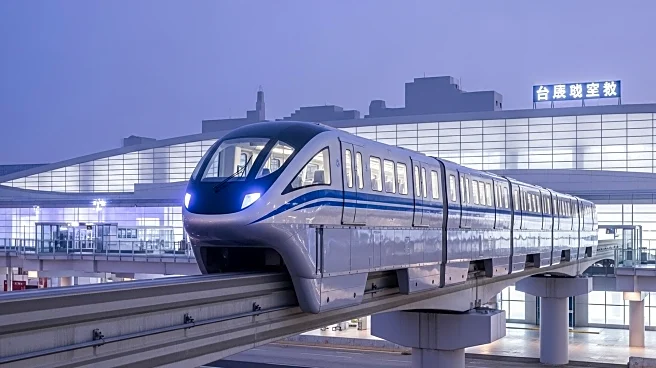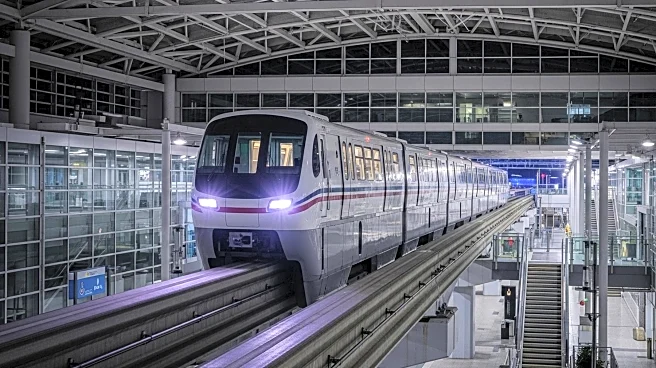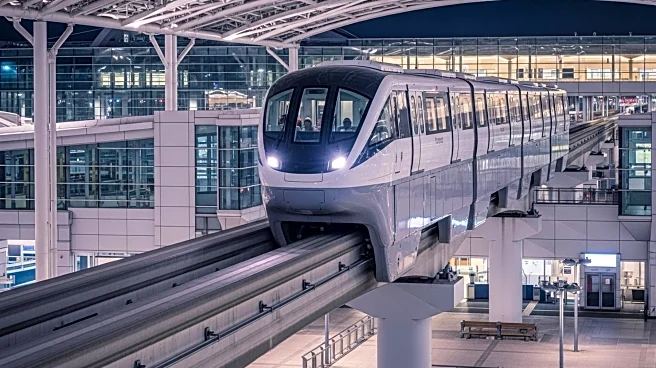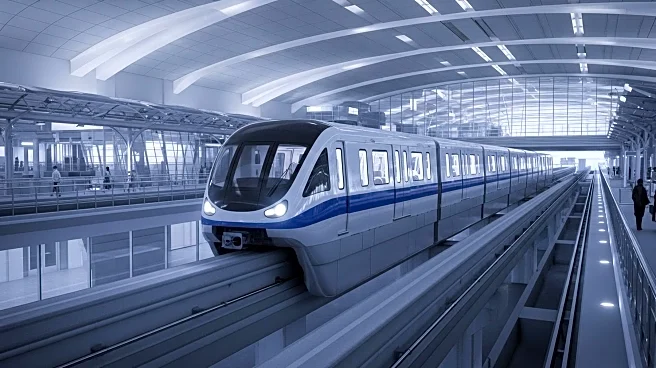What's Happening?
The Port Authority of New York and New Jersey has commenced work on a new AirTrain system at Newark Liberty International Airport, marking a significant step in the airport's comprehensive redevelopment plan. The existing AirTrain, built in 1996, is nearing the end of its operational life and struggles to meet the demands of increasing passenger numbers, which have grown from 30 million annually to nearly 50 million by 2024. The new AirTrain project, valued at $3.5 billion, aims to double the current capacity with seven five-car trains, each capable of carrying 135 to 160 passengers. The system will feature spacious walkthrough cars, real-time signage, and comfortable seating, enhancing the travel experience. The project includes three new stations connected by pedestrian pathways and a 70,000-square-foot maintenance facility. The initiative is part of the EWR Vision Plan, which also includes new terminals and roadway improvements.
Why It's Important?
The new AirTrain system is crucial for accommodating the projected growth in passenger numbers at Newark Liberty International Airport, which is expected to rise by 50% by 2040. The project is designed to improve capacity, reliability, and customer experience, aligning Newark with other major regional airports like LaGuardia and JFK, which have undergone significant upgrades. The enhanced infrastructure will support the airport's role as a key transportation hub, facilitating smoother transit for millions of travelers. The investment reflects a broader trend of modernizing airport facilities to meet future demands and improve competitiveness in the aviation sector.
What's Next?
The first passenger service for the new AirTrain is scheduled for early 2030. As construction progresses, stakeholders including airlines, passengers, and local businesses will likely monitor developments closely. The project is expected to influence future airport expansion plans and could set a precedent for similar infrastructure upgrades at other airports. The Port Authority's commitment to enhancing Newark's facilities may prompt further investments in regional transportation networks, potentially impacting economic growth and job creation in the area.
Beyond the Headlines
The AirTrain project not only addresses immediate capacity issues but also represents a shift towards more sustainable and efficient public transit solutions. By integrating modern technology and design, the initiative could serve as a model for future airport transit systems, emphasizing functionality and passenger experience. The inclusion of local art and natural light in station designs highlights a cultural dimension, aiming to create a welcoming environment for travelers. This approach may influence how transit projects are conceptualized, prioritizing aesthetics alongside practicality.

